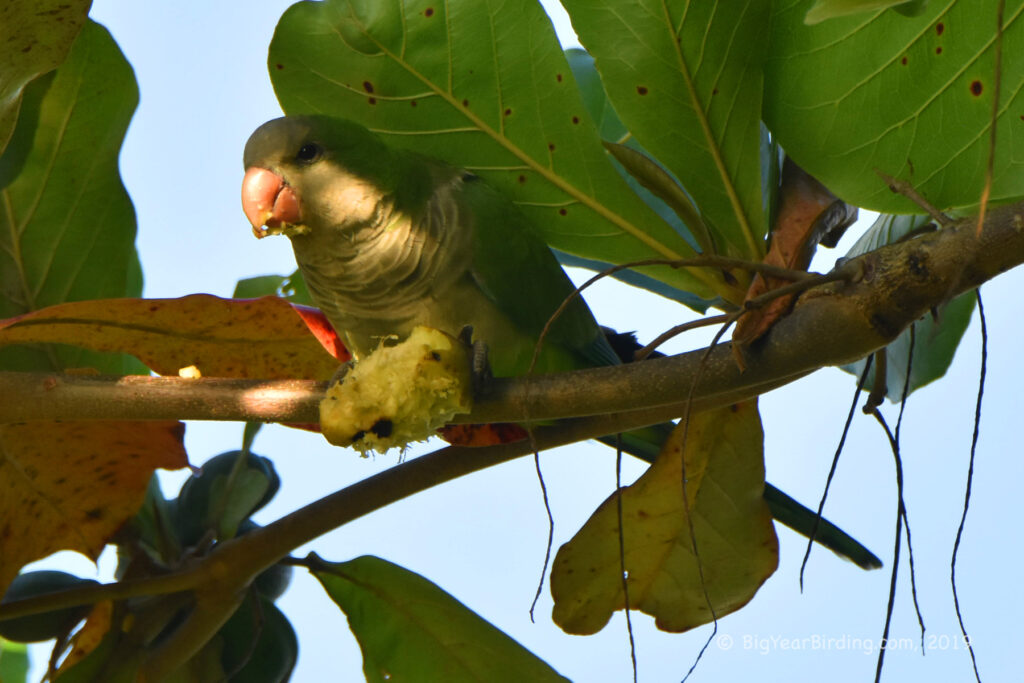The Monk Parakeet, also known as the Quaker Parrot, is a small, social parrot species that is native to South America. These birds are about 11-12 inches (28-30 cm) in length and typically weigh between 3-4 ounces (85-113 grams). They have bright green plumage on their back and wings, with a greyish face and breast, and a bright blue primary flight feather. They also have a distinguishing feature of a long, pointed tail that sets them apart from other parrot species.
One of the most remarkable things about the Monk Parakeet is its ability to build intricate, communal nests made of twigs and branches that can house up to several dozen birds. These large, messy structures can often be seen in parks or trees, and are a common sight in many urban areas where Monk Parakeets have established feral populations. These populations can be found in parts of the United States, particularly in Florida and the northeast, where they are considered an invasive species.
Monk Parakeets are not migratory birds, and instead, they are year-round residents of their native South American habitats. However, they have been introduced to many different parts of the world, including the United States, where they have established breeding populations. In these areas, they have adapted to urban environments and can often be seen in parks, gardens, and even residential areas.
In terms of their diet, Monk Parakeets are primarily herbivores and feed on a variety of plant material, including seeds, fruits, and nuts. They have also been known to occasionally feed on insects and other small invertebrates. In captivity, they are commonly fed a diet of seeds, fruits, and vegetables, as well as commercial parrot food.
Overall, the Monk Parakeet is a fascinating and unique bird species that has established a strong presence in many urban areas around the world. Their bright plumage and communal nesting habits make them a favorite among bird enthusiasts, and their adaptability to urban environments has allowed them to thrive in many different parts of the world.

